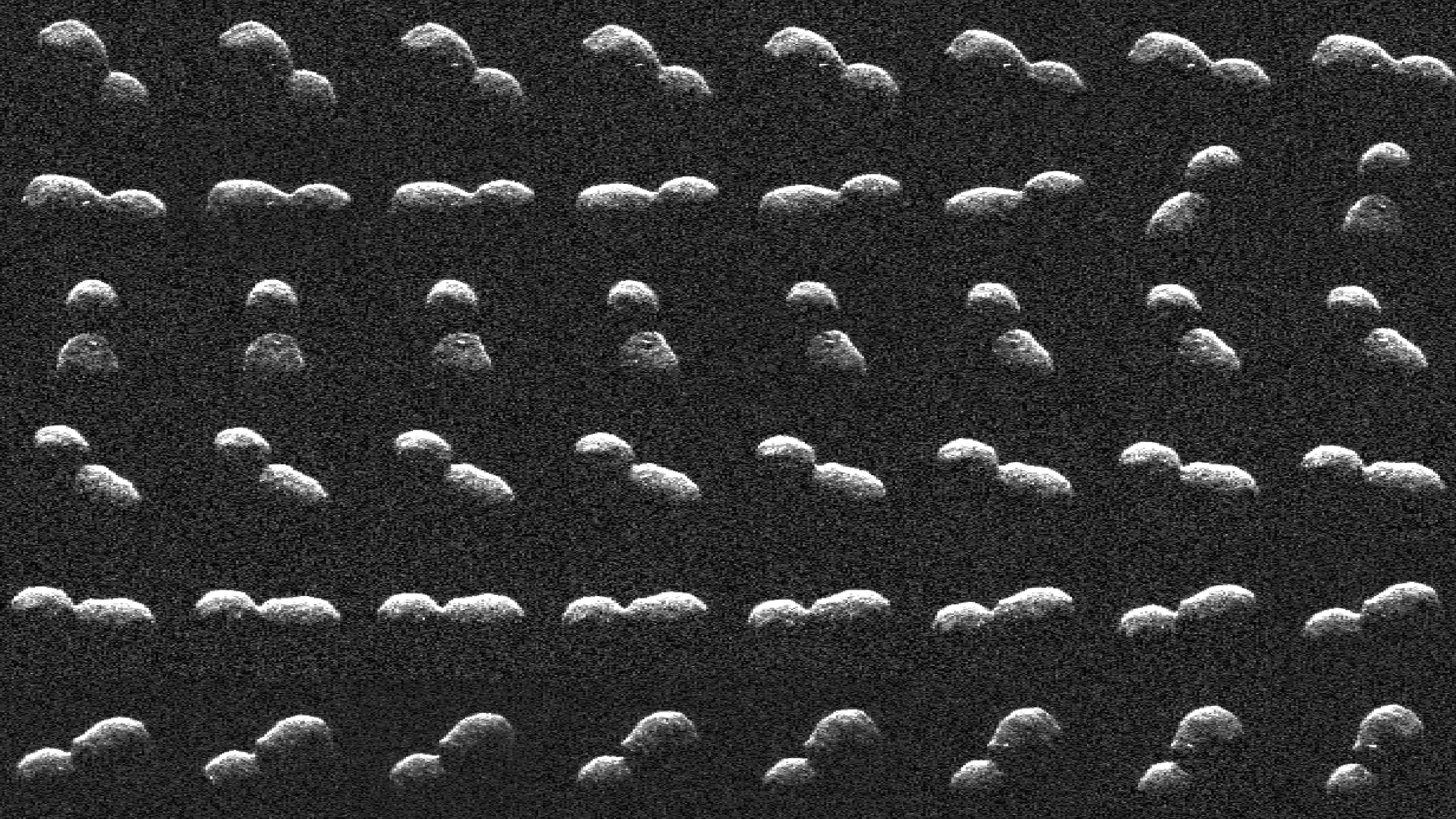
NASA scientists have released fascinating images of an asteroid that zipped past Earth this week — revealing it to be the shape of a weird tumbling snowman.
The asteroid, named 2024 ON, flew safely past our planet at a distance of 620,000 miles (1 million kilometers) — roughly 2.6 times the distance between the moon and Earth — on Tuesday (Sept. 17). It was traveling at 19,842 mph (31,933 km/h), or around 26 times the speed of sound.
The new images were captured by the Goldstone Solar System Radar near Barstow, California on Sept. 16. They showed that the skyscraper-size asteroid resembles something like a peanut. That's because 2024 ON is actually two asteroids that became locked by their own gravity into a formation known as a contact binary after they came too close to each other. Other famous contact binaries include Selam, a double-lobed 'moonlet' orbiting the asteroid Dinkinesh in the main belt between Mars and Jupiter, and Arrokoth, a frigid object beyond the orbit of Pluto that was studied by NASA's New Horizons probe in 2015.
"This asteroid is classified as potentially hazardous, but it does not pose a hazard to Earth for the foreseeable future," NASA wrote in a statement. "These Goldstone measurements have allowed scientists to greatly reduce the uncertainties in the asteroid's distance from Earth and in its future motion for many decades."
Related: Earth once wore a Saturn-like ring, study of ancient craters suggests
NASA deems any space object that comes within 4.65 million miles (7.5 million km) of our planet as "potentially hazardous," even if they pose no immediate threat to Earth. That's because even slight nudges to such an asteroid's trajectory — say, by bumping into another asteroid — could send it onto a collision course with Earth.
NASA tracks the locations and orbits of roughly 28,000 asteroids by scanning the entire night sky every 24 hours. The space agency has estimated the trajectories of all these near-Earth objects beyond the end of the century, and found that Earth faces no known danger from an apocalyptic asteroid collision for at least the next 100 years.







